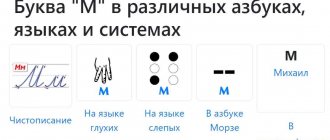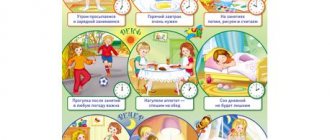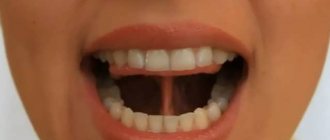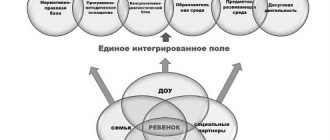Individual plan for correction of level 2 OHP
Plan for correction of general speech underdevelopment level II
Compiled by: teacher-speech therapist Onopchenko A.S.
The plan is drawn up for _______________________________________
The creation of this plan is based on modern correctional and developmental programs of the Ministry of Education of the Russian Federation, scientific and methodological recommendations:
- G.V. Chirkina. Programs of preschool educational institutions of a compensatory type for children with speech impairments. – M.: Education, 2009;
- Filicheva T.B., Chirkina G.V. Corrective education and upbringing of 5-year-old children with general speech underdevelopment. –– M., 1991;
- T.B. Filicheva, G.V. Chirkina. Preparing children with general speech underdevelopment for school in a special kindergarten: At 2 o’clock. M.: Alfa, 1993.
Goal: to form a full-fledged phonetic system of the language, develop phonemic perception and skills of initial sound analysis and synthesis, automate auditory pronunciation skills in various situations, develop lexical and grammatical means of the language and coherent speech.
Tasks:
- development of speech understanding;
- activation of speech activity and development of lexical and grammatical means of the language;
- development of the pronunciation side of speech;
- development of independent phrasal speech.
Characteristics of the speech of children with speech development level II.
This level is defined as the beginnings of common speech, the distinctive feature of which is the presence of a two-, three-, and sometimes even four-word phrase: “Yes, drink moko” - let me drink milk; “baska atat nika” - grandmother reads a book; “give me a chance” - let me play; “Vizi asanya meat” - here lies a big ball. By combining words into phrases and phrases, one and the same child can both correctly use the methods of coordination and control and violate them: “ti yoza” - three hedgehogs, “moga kukaf” - many dolls, “sinya kadasy” - blue pencils, “let badika” - pours water, “tasin petakok” - red cockerel, etc. In children’s independent speech, simple prepositions or their babbling variants sometimes appear (“tidit a tue” - sits on a chair, “shield a toi” - lies on the table); There are no complex prepositions.
The lack of practical mastery of the morphological system of the language, in particular word-formation operations of varying degrees of complexity, significantly limits the speech capabilities of children, leading to gross errors in the understanding and use of prefixed verbs, relative and possessive adjectives, nouns with the meaning of an actor (“Valya papa” - Valya papa , “alil” - poured, watered, poured out, “giby soup” - mushroom soup, “dayka hvot” - hare’s tail, etc.). Along with these errors, significant difficulties are observed in the assimilation of generalizing and abstract concepts, the system of antonyms and synonyms. As at the previous level, the polysemantic use of words and various semantic substitutions are preserved.
Characteristic is the use of words in a narrow sense. With the same word, a child can name objects that are similar in shape, purpose, function, etc. (“fly” - ant, beetle, spider; “tufi” - shoes, slippers, boots, sneakers, sneakers). Limited vocabulary is also manifested in ignorance of many words denoting parts of the body, parts of an object, dishes, transport, baby animals, etc. (“yuká” - hand, elbow, shoulder, fingers, “stui” - chair, seat, back ; “bowl” - plate, saucer, dish, vase; “fox” - little fox, “mánka voyk” - wolf cub, etc.). There are noticeable difficulties in understanding and using in speech words denoting the characteristics of objects, shape, color, material.
Coherent speech is characterized by insufficient transmission of certain semantic relationships and can be reduced to a simple listing of events, actions or objects. It is extremely difficult for children with level II speech development to compose stories and retellings without the help of an adult. Even with hints and leading questions, children cannot convey the content of the storyline. This most often manifests itself in the listing of objects and actions with them, without establishing temporal and cause-and-effect relationships.
The sound side of children's speech is not fully formed and lags significantly behind the age norm: multiple disturbances in the pronunciation of 16-20 sounds are observed. The statements of preschoolers are difficult to understand due to pronounced violations of the syllabic structure of words and their sound content: “Dundas” is a pencil, “akvaya” is an aquarium, “vipised” is a bicycle, “misaney” is a policeman, “hadika” is a refrigerator.
Forms of speech therapy intervention – individual forms of work.
Speech therapy methods:
- Verbal;
- Visual;
- Practical.
Directions for implementing the plan:
- Speech therapy diagnostics.
- Speech therapy correction of oral and prerequisites for the formation of written speech in children.
- Working with teachers.
Forms of work with teachers:
- Individual consultations.
- Explanation of the peculiarities of doing homework.
The plan is designed for individual lessons with a child. Classes take place 3 times a week.
In individual lessons, work is carried out on:
1. Activation and development of differentiated movements of the organs of the articulatory apparatus;
2.Preparation of the articulatory base for the assimilation of missing sounds;
3. Formulation of missing sounds, their differentiation by ear and the initial stage of automation at the level of syllables and words.
4. Development of lexical and grammatical means of the language (development of understanding of speech, clarification and expansion of vocabulary, formation of general concepts, practical skills of word formation and inflection, ability to use simple common sentences).
5. Development of coherent speech (teaching the child to speak independently, developing the ability to convey the impression of what he saw, about the events of the surrounding reality, to present the contents of pictures or their series in a logical sequence, to compose a descriptive story).
The duration of individual lessons is 20 minutes.
The purpose of individual lessons is to select and apply a set of articulation exercises aimed at eliminating specific violations of the sound side of speech, characteristic of dyslalia, dysarthria, etc.; development of speech understanding; activation of speech activity and development of lexical and grammatical means of the language; development of independent phrasal speech.
In individual lessons, a speech therapist teacher has the opportunity to establish emotional contact with the child, intensify control over the quality of speech, correct speech defects, and smooth out neurotic reactions.
Directions of correctional and developmental work:
- formation of full-fledged pronunciation skills;
- development of phonemic perception, phonemic representations, forms of sound analysis and synthesis accessible to age;
- development of attention to the morphological composition of words and changes in words and their combinations in a sentence;
- enriching the dictionary mainly by drawing attention to the methods of word formation, to the emotional and evaluative meaning of words;
- developing the skills to correctly compose simple and complex common sentences; use different sentence structures in independent coherent speech;
- development of coherent speech in the process of working on retelling, with the formulation of a certain correctional task for the automation in speech of phonemes specified in pronunciation;
- formation of preparation for teaching literacy and mastering the elements of literacy.
Planned results of speech therapy work:
- correctly articulate the given speech sounds in various phonetic positions and forms of speech;
- differentiate learned sounds;
- find words with a given sound in a sentence;
- correlate objects with their qualitative characteristics and functional purpose;
- recognize familiar objects by verbal description;
- compare familiar objects according to individual, most clearly visible characteristics;
- understand simple grammatical categories: singular and plural nouns, imperative and indicative moods of verbs, nominative, genitive, dative and accusative cases, some simple prepositions;
- reflectively and independently reproduce the rhythmic-intonation structure of two- and three-syllable words from preserved and learned sounds;
- correctly use individual case endings of words used within prepositional constructions in independent speech;
- use phrases and simple uncommon sentences in independent speech (“My bear”, “Masha, sing”, “Masha, give me a doll”, etc.).
Distribution of lexical topics by month:
September: "Autumn".
October: “Our body” “Vegetables”, “Fruits”, “Vegetables-fruits”, “House and its parts”, “Clothing”.
November: “Clothing”, “Shoes”, “Furniture”, “Dishes”.
December: “Dishes”, “New Year’s holiday”, “Pets”, “Winter”, “Winter fun”.
January: “Winter”, “Wintering Birds”, “Wild Animals”, “Wild Animals in Winter”, “Domestic Birds”.
February: “Poultry”, “Migratory Birds”, “Food”, “Our Army”, “Family”, “Early Spring”.
March: “Early Spring”, “Mother’s Day”, “Spring”, “Transport”, “First spring flowers”, “Indoor plants”.
April: “Indoor plants”, “Wild animals in spring”, “Toys”, “Aquarium fish”, “Insects”.
May: "Road Rules"





